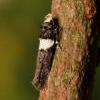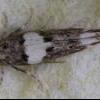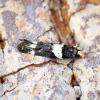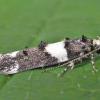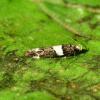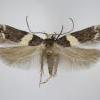35.157 Recurvaria leucatella (Clerck, 1759)
Status and Distribution
Local, occasionally locally common in England from the Midlands southwards and in eastern Wales. Very local north of the Midlands and the rest of Wales, but with some indications of a range expansion northwards into Lancashire and Yorkshire since 2000. The species is rare in the Channel Islands and has been recorded once in Ireland, on the west side, in 2011. Absent from Northern Ireland, Isle of Man, most of northern England and Scotland.
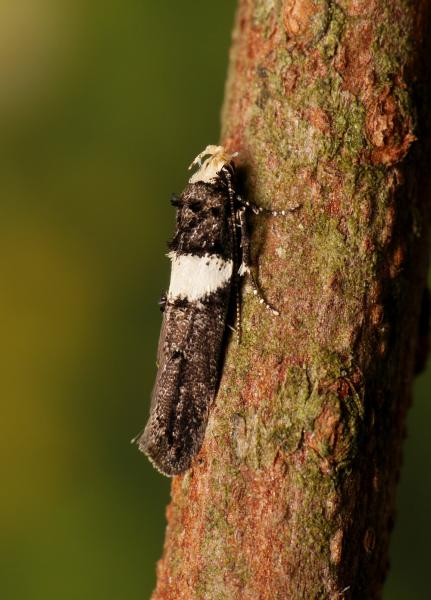
Provisional map
Foodplant and Larval Feeding Signs
On Malus spp. including Malus sylvestris (crab-apple), see distribution map, Crataegus monogyna (hawthorn) and less frequently Sorbus aucuparia (rowan).
In Europe also found on Amelanchia ovalis (snowy mespilus), Crataegus laevigata (midland hawthorn), Malus domestica (apple), M. pumila, Prunus domestica (wild plum), P. spinosa (blackthorn), Pyrus communis (pear), Sorbus chamaemespilus and S. torminalis (wild service-tree).
Within spun leaves.
Habitat
Gardens, hedgerows, orchards and parkland with scrubby growth or isolated larger trees.
Finding the Moth
Larva: within a pair of spun leaves, occasionally several leaves may be pulled together, sometimes with a piece of withered brown leaf intermixed.
Adult: has been found resting on a leaf of the foodplant, can be beaten from hedgerows and isolated foodplant trees and comes readily to light.
Similar Species
Could not be confused with any other British moth.
Single brooded from mid-June to mid-August.
Earliest: an exceptionally early date of 29th April 2011 (VC35). Records in May are fairly few in number but seem to be on the increase.
Latest: 9th September 2010 (VC15).

